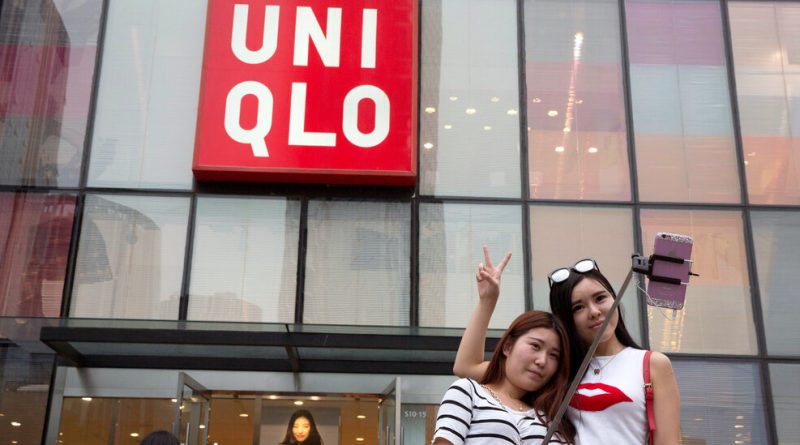Women Posing in Children’s Clothing? Fad Sparks Body-Shaming Concerns.
[ad_1]
The children’s clothing section at Uniqlo in China has gained an unexpected new clientele: adult women.
In the latest viral challenge to sweep Chinese social media, women pose for dressing-room selfies in children’s T-shirts from the Japanese fashion giant. The trend has ignited a heated debate about whether it promotes body shaming, with experts raising concerns that it reinforces the country’s unhealthy standards of beauty.
“This is a dangerous trend, not just in terms of a drive for thinness and the pressure this puts on women and girls, but also in terms of the overt sexualization of women,” said Tina Rochelle, an associate professor in social and behavioral sciences at the City University of Hong Kong who researches the influence of gender and culture on health. She said that the small clothes are likely to be tighter and more form fitting on a woman’s body.
On Weibo, a microblogging platform, where the hashtag “Adult tries on Uniqlo children’s clothing” has been viewed 680 million times, criticism is split between those who object to the unrealistic beauty standards the challenge promotes and those who express the more practical concern that women are stretching out the clothes and rendering them unsaleable.
One user called it “another way of showing off the ‘white, young, thin’ aesthetic,” referring to a phrase commonly used to describe the country’s dominant beauty standard. The person added: “It emphasizes unhealthy body shaming and should be firmly resisted.”
Another commentator wrote: “Although I am envious of those women’s figures, they should buy the clothes after trying them! The clothes are all stretched out, how can children wear them!”
Uniqlo did not respond to emails on Thursday seeking comment.
The challenge has been labeled the latest iteration of “BM style,” a type of fashion recently popularized by the cult Italian brand Brandy Melville, which is youthful, casual and, above all, thin (its stores carry only one size: extra small).
Since the brand opened its first Chinese store in Shanghai in 2019, it has become an aspirational symbol for young women desperate to squeeze into its clothes. An unofficial sizing chart circulated on Weibo showed how much women at various heights would need to weigh to fit — a 5-foot-3 woman would need to weigh 95 pounds.
Brandy Melville did not immediately respond to an email seeking comment.
Jia Tan, an assistant professor in cultural studies from the Chinese University of Hong Kong, said that the apparel industry is a prominent driver of what is considered “standard” sizing. The same sizes are usually smaller in Asia than they are in the West, she said, and “standard” sizes exclude a significant part of the population.
“I think we need to first question the tremendous social pressure on women, and why the apparel industries can have so much power in standardizing how we look, before we point our fingers on those adult women who show off in children’s sizes,” Professor Tan said in an email.
Similar online challenges have gone viral on Chinese social media before. In 2016, women — and some men — posed with their waists behind a vertical sheet of A4 paper to show they were “paper thin.”
That challenge was so popular that celebrities took part and Chinese state media covered it, prompting one feminist campaigner, Zheng Churan, to write in a riposte, “I love my fat waist” on a piece of paper held horizontally over her waist.
In 2015, for the “belly button challenge,” people reached one arm behind their back and around their waist to touch their bellybutton — ostensibly to brag about how thin they were.
There seems to be some growing awareness of body positivity in China. A few months ago, a store faced a backlash for labeling larger women’s clothing sizes as “rotten,” prompting it to apologize.
But Dr. Rochelle, the City University of Hong Kong professor, noted that while there was an increasing willingness among women to call out body shaming and share their experiences of it online, there were little indicators that society at large was changing.
“It doesn’t seem to have hit home over here that fat-shaming and publicly discussing a woman’s weight can have a major impact on a person’s well-being,” she said.
